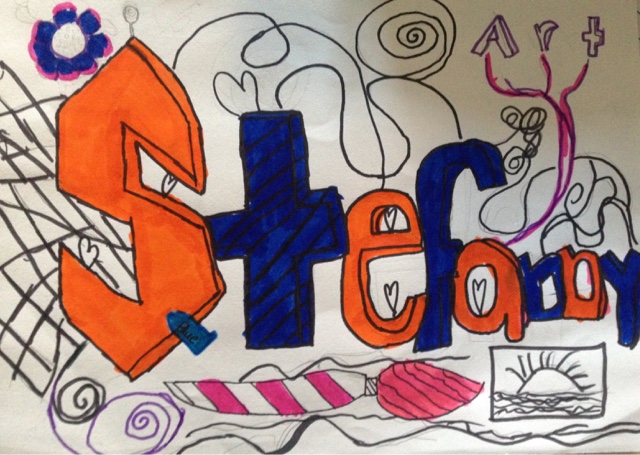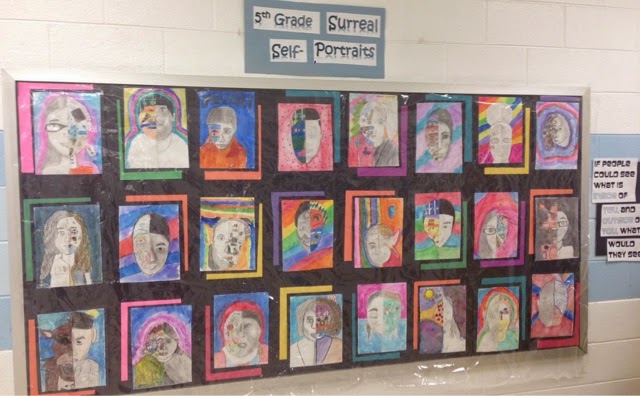"Every child is an artist. The problem is how to remain an artist once we grow up." -Pablo Picasso
"Every child is an artist. The problem is how to remain an artist once we grow up." -Pablo Picasso
Sunday, November 15, 2015
4th grade Zentangle Name art
I'm I'm Fourth grade students were inspired by graffiti lettering to create a sketchbook cover with their name. They added zentangles with hidden images to convey personal meaning.
1st grade Piet Mondrian- inspired imaginary creatures
First grade students first identified the different types of lines, colors and shapes found in 'Mondrian's artwork
Then students used geometric shapes, organic shapes and lines to create some kind of creature from their imagination.
Sunday, March 8, 2015
If people could see you on the 'outside' and on the 'inside', what would they see? 5th Grade Surreal Self Portraits

As students get older, their artistic confidence slowly decreases. This project is meant to change students' fixed mindsets into growth mindsets as well as increase their artistic confidence. With effective effort, learning and utilizing drawing strategies, understanding basic brain malleability, discovering real world examples of 'famous failures', students learned how to improve tehir drawing ability and persisted to finish their portraits and become more confident artists.
Growth Mindset video
Will Smith on Work Ethic Video
http://www.youtube.com/watch?v=Y_NDL4u2A-U
Michael
Jordan on failure
John
Legend on failure
•https://www.youtube.com/watch?v=LUtcigWSBsw&list=UU4a-Gbdw7vOaccHmFo40b9g
To prepare for this project, students learned different drawing strategies and exercises to improve their observational drawing skills.
They began with blind contour drawings in which students trained their eyes and brain to focus on the object they are observing. Students allowed themselves to only look at the object and not at their paper. This helps them to draw what they actually see versus what they think they see.
Drawing hands first
Blind Contour drawing of shoes
Then students practiced looking at an image upside down and trying to draw it . This exercise helps the brain to interpret images solely as lines and shapes rather than an image. This helps students to draw images more accurately so that they draw what is actually in front of them instead of what they think they see.
Students learned that by focusing on the negative space (the area around an object or image) they can better draw the image because it forces you to only look at the shapes.
Then students were taught how to draw the face in basic proportions of the face to assist in drawing accurately
The next drawing strategy taught was finishing half a symmetrical image (self portrait). Students looked at half of a picture of their face and recreating' the other side. Some used a transparency sheet to trace over the face and look at the transparency which helped eliminate extra information and break the face into basic lines and shapes
Finally students learned how to add value to their face to make it look more realistic and three-dimensional by squinting their eyes to see the 'shapes' of lights and darks on the face .
Students then drew the 'surreal' side that represent who they are on the 'inside' by adding images that represent their interests and their personality.
They used colored pencils to add color and painted the background with water colors
Students learned that with effective effort, applying drawing strategies and persistence, they could improve their drawing skills and become better artists.
Evidence of increased student self-efficacy and growth mindset in student feedback surveys and artist statements.
Evidence of student growth: Many of the students didn't even recognize their first self-portrait they drew earlier in the year without any instruction!
Subscribe to:
Posts (Atom)



































































































